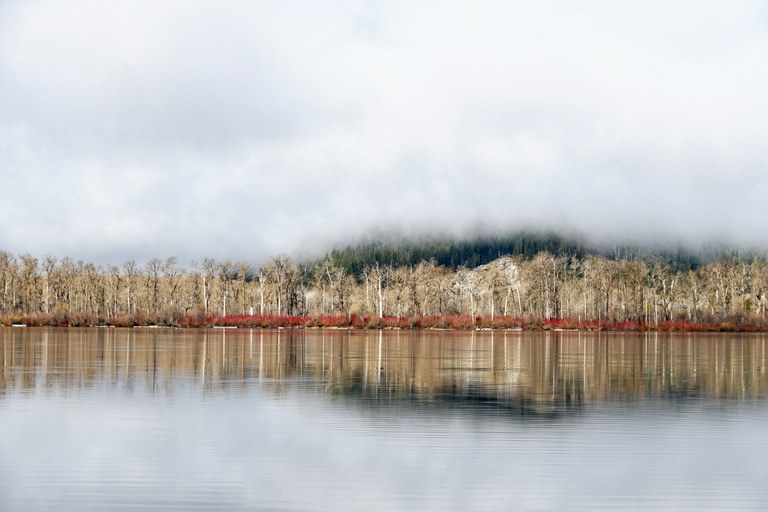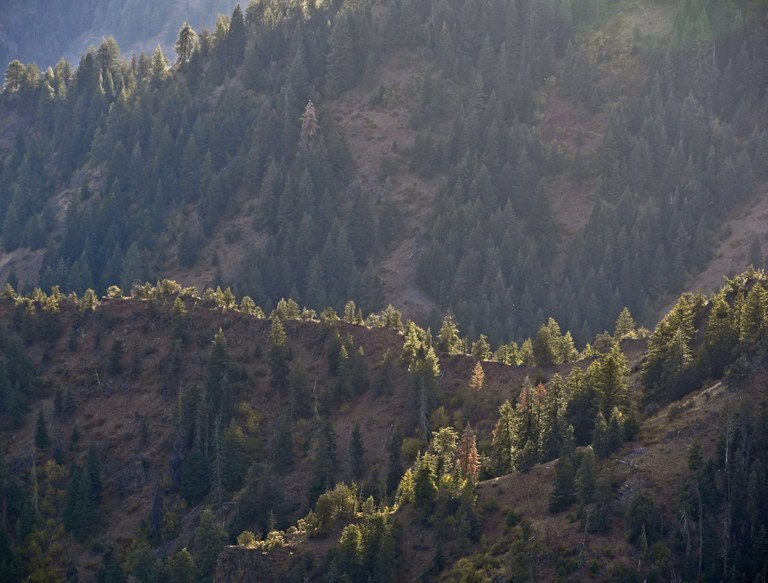How to Photograph Hidden Landscapes
It’s important to remember that focusing our gaze a little closer yields a world that often goes unseen. It’s easy to overlook the mini-landscapes and hidden features right in front of us.
by Doug Diekema
For many of us, landscape photography is about capturing a spectacular panorama — the magnificent mountain range, the green valley leading up to it and the rocks or flowers in the foreground. Having achieved the summit, we photograph one grand vista after another. But as wonderful as those photos can be, it’s important to remember that focusing our gaze a little closer yields a world that often goes unseen. It’s easy to overlook the mini-landscapes and hidden features right in front of us.

A row of trees abutting a swath of clouds. Photo by Doug Diekema.
- See the trail in a different way: Each grand panorama contains dozens of micro-landscapes worthy of our attention, but identifying these smaller facets takes time and focus. Slow your pace. Scour the landscape for details. Look up. Look down. This is an intimate experience: As you pause and gaze, you begin to see what makes a place special — what small features contribute to the larger whole. Look for patterns and textures, the tiny details that we fail to appreciate when we’re hurrying down a trail or admiring a vast mountain range. Enjoying a beautiful hike is much like listening to music. The recording brings its own joy, but the experience changes and improves when you also focus on the different elements of the music. What are the strings doing, how do the drums enhance the hook? Making yourself aware of these elements improves the overall experience of listening to music. In the same way, focusing on the various components of a landscape can improve the experience of the whole and, along with it, the images we capture.
- Learn to love imperfect conditions: Take advantage of days when conditions may seem problematic for landscape photography. Weather, crowds, smoke, fog, clouds, gray skies and lessthan-optimal lighting may impact your ability to capture lovely landscapes. Even on clear, sunny days you may feel frustrated as you try to capture the grandeur. These circumstances are perfect for more intimate photography. They provide an opportunity to notice attributes of the trail that we might otherwise miss: the details of tiny flowers lining the path, raindrops glistening on a leaf, a shaft of light illuminating a single tree. Imperfect conditions are opportunities to explore the details of our favorite places, to isolate the components of a larger landscape and to surprise ourselves by discovering overlooked opportunities for great photos.
- Use your telephoto lens: When graced with an expansive view, the temptation is to use the wideangle end of a zoom lens to capture it. Instead, get in the habit of using your telephoto to identify intimate details, such as a patch of trees, an isolated swatch of color or the lines and subtle hues of a crevassed glacier. Telephoto lenses are a terrific tool for portraits of nearby objects — the longer focal length more effectively blurs the background so that distractions are eliminated and the main subject is highlighted. More than any other tool, the telephoto end of my zoom lens has helped me appreciate the smaller miracles that make up the landscapes I so admire.

Sunlit trees along the ridgeline. Photo by Doug Diekema.
Tips for mini-landscape photography
- Keep it simple. Maintain focus on the subject of your photo and eliminate any distracting features.
- Look for patterns and textures in the landscape that make an interesting photo in their own right and isolate them. Use the telephoto on your zoom lens to isolate aspects of the larger landscape that may be lost in the big picture.
- Use a macro-lens to highlight the details of flowers, insects and lichen-covered rocks.
This article originally appeared in the Fall 2019 issue of Washington Trails magazine. Support trails as a member WTA to get your one-year subscription to the magazine.

